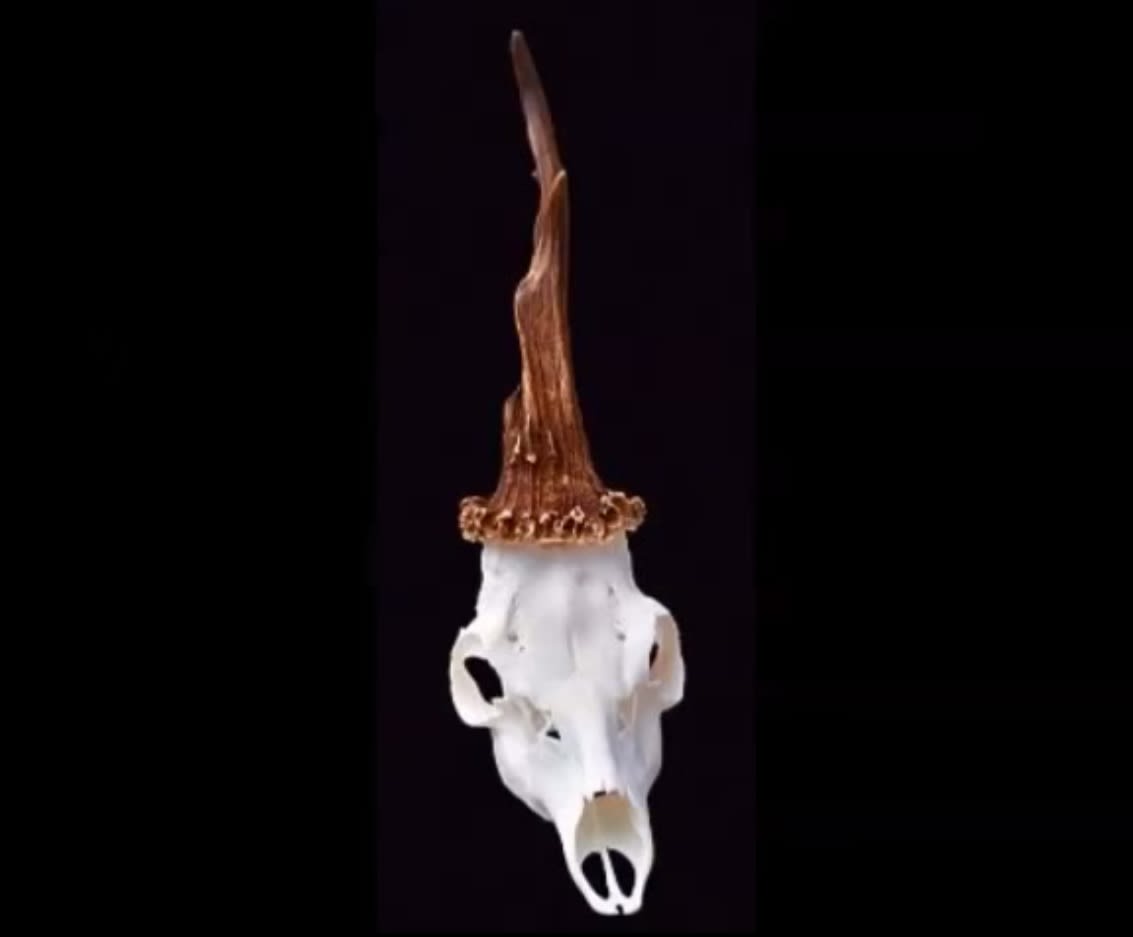What Makes Deer Grow Strange Antlers?
Daniel Xu 12.03.14

Like fingerprints or snowflakes, no two sets of antlers are ever exactly alike. For humans they are a source of fascination and can be surprisingly useful, if the tools of our early ancestors and the powder flasks of the 19th century are any indicator. For deer, however, they have a single purpose: to secure their right to mate. So why do these bone structures vary so widely and drastically? Recently a hunter in Slovenia harvested what appeared to be a “unicorn”—only to find out that it was actually just a male roe deer with a strange antler formation. Another hunter thousands of miles away near Spokane, Washington also harvested a “unicorn” deer. That one was a not a buck at all, but a doe.
Wait, what?
To get a better sense of how deer antlers grow and why strange antler formations form, I spoke to Kip Adams, a certified wildlife biologist with the Quality Deer Management Association, a non-profit conservation organization based in Georgia. As it turns out, these “unicorn” deer were not the strangest that he had ever heard of, and the bony protrusions can sprout from just about anywhere on a deer given the right conditions, even from the animal’s eye.
“When the animal is young it develops what is called a pedicle at the base of where their antlers would be, and every year, that’s where their antlers would grow from,” Kip explained. “[…] the cells in that pedicle, you can actually lose those or put them somewhere else on the body. For example, researchers have taken those cells and put them on a deer’s leg, and antlers would grow right off of that leg.”
That was the subject of a 1984 study in which scientists successfully grafted an antler pedicle onto a fawn’s leg. Pedicles can not only be moved, but also modified. This is usually caused by damage, and injury to the pedicle base has a high chance of leading to nontypical antlers. Even injuries to other parts of the body, such as the leg bones, will be reflected in the shape of the antlers. The more serious the trauma, the more misshapen the rack. What is more, nerves near the antlers will “remember” injuries that the deer has suffered in the past and will produce impacted antlers accordingly.
“What exactly happened with these [unicorn] deer I don’t know, but it is possible that they were injured early in their life and perhaps one of their pedicles have been removed completely while the cells of the other one somehow moved closed to the center of their head,” Kip said over the phone. “It’s definitely very unique.”
And with enough research, Kip speculated that scientists will be one day able to even regrow bone.

“Essentially with an animal growing an antler, it’s similar to you or I literally regrowing an extremity,” Kip shared. “If we could figure out exactly how deer, or moose, or elk, or any member of that family do it, we could possibly regenerate limbs, lost fingers, lost arms, lost legs, you name it.”
But what about that female unicorn in Spokane, how did that happen? Kip explained that it was simply a hormonal imbalance.
“If does get too much testosterone, they’ll grow antlers,” Kip said. “You can take a perfectly fine female deer and inject it with testosterone, and they could grow antlers. What happens is that it takes a certain amount of testosterone to grow them and even more testosterone to actually mineralize the antler, or harden it. As a result, only very rarely will a doe get enough testosterone to leave velvet and their antlers are generally very soft. It is an antler, but it is not complete.”
That is exactly what Amy C. of Washington State observed when she bagged her unicorn deer in September.
“This is a deer that I [had] seen on the property before and on the day of the hunt there were three spikes together, so I had a choice,” she told me over the phone. “The ‘unicorn’ deer happened to be the first one to come into range. So I took it and at the time I thought it was my first buck. When we went to retrieve it, we realized that it was actually a doe. I was like, ‘Oh my gosh, why does this animal have female parts?’ It was a very interesting experience overall.”
Sure enough, Amy’s doe was still in velvet. She said that she checked the deer’s head, but did not find any evidence of a second pedicle. Amy now has the skull in her backyard, where it’s being picked clean with the help of some local bugs. It will eventually take its place somewhere in her home.
So what do female deer do with those antlers? Do they spar with bucks? Can they still bear young? Kip said that does with antlers generally behave no differently than other females. As funny as it would be, does do not take advantage of their new headgear to fight bucks. In fact, they are usually fertile and can bear fawns.
And perhaps most importantly, their venison should taste the same.
What is the weirdest antler formation you’ve ever seen? Share your experiences in the comments below.
Edited 12-3-2014 for errors.

